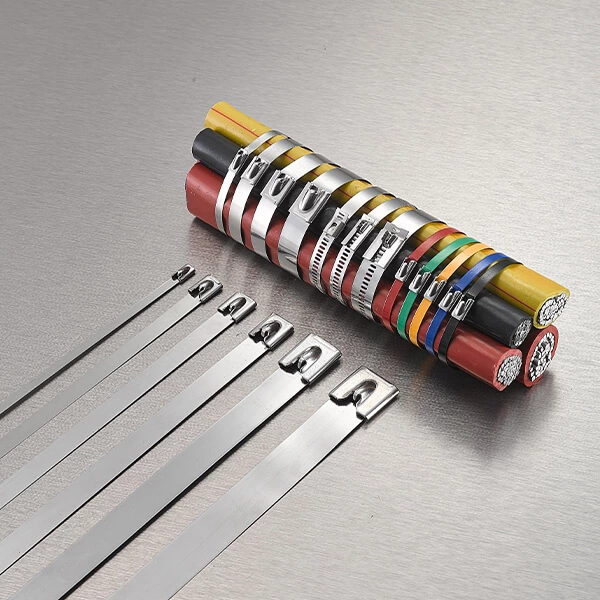Intergranular Corrosion Of Natural Stainless Steel Cable Ties
Stainless Steel Cable Tie is widely used in industry, transportation, shipping, communication, agriculture and other fields. However, many people will encounter intergranular corrosion problems when using cable ties. Today, the editor will introduce this problem in detail.
What is intergranular corrosion of stainless steel? Stainless steel will produce corrosion between grains under the influence of corrosive media. Once intergranular corrosion occurs in the cable tie, it will break along the grain boundary during use due to the influence of stress, and even cause the strength to disappear. Such a cable tie does not have a good bundling function.
Stainless steel itself has a certain corrosion resistance, and the cable tie produced using this raw material also has corrosion resistance, but one of the main conditions for corrosion resistance is that the mass fraction of chromium should be greater than 12%. Under high temperature conditions, the diffusion rate of carbon in stainless steel grains is faster than that of chromium.
At room temperature, the solubility of carbon in austenite is relatively small, only 0.02% to 0.03%. Excess carbon will diffuse to the grain boundary and combine with chromium to form chromium carbide between grains. However, the diffusion rate of chromium is low, and it cannot diffuse to the grain boundary in time, resulting in the chromium needed for chromium carbide coming from the vicinity of the grain boundary, so that the amount of chromium at the grain boundary is reduced. When the mass fraction of chromium at the grain boundary is less than 12%, intergranular corrosion will occur.
When the heat treatment is improper, the cable tie will have intergranular corrosion problems. When the steel is heated to a temperature between 425-815℃ or cooled to this temperature range, intergranular corrosion may occur.
In order to reduce the problem of intergranular corrosion of natural stainless steel cable ties, the 65% nitric acid corrosion test method can be used for regular testing, once a week, and the average corrosion rate obtained in every five test cycles cannot exceed 0.05mm.



